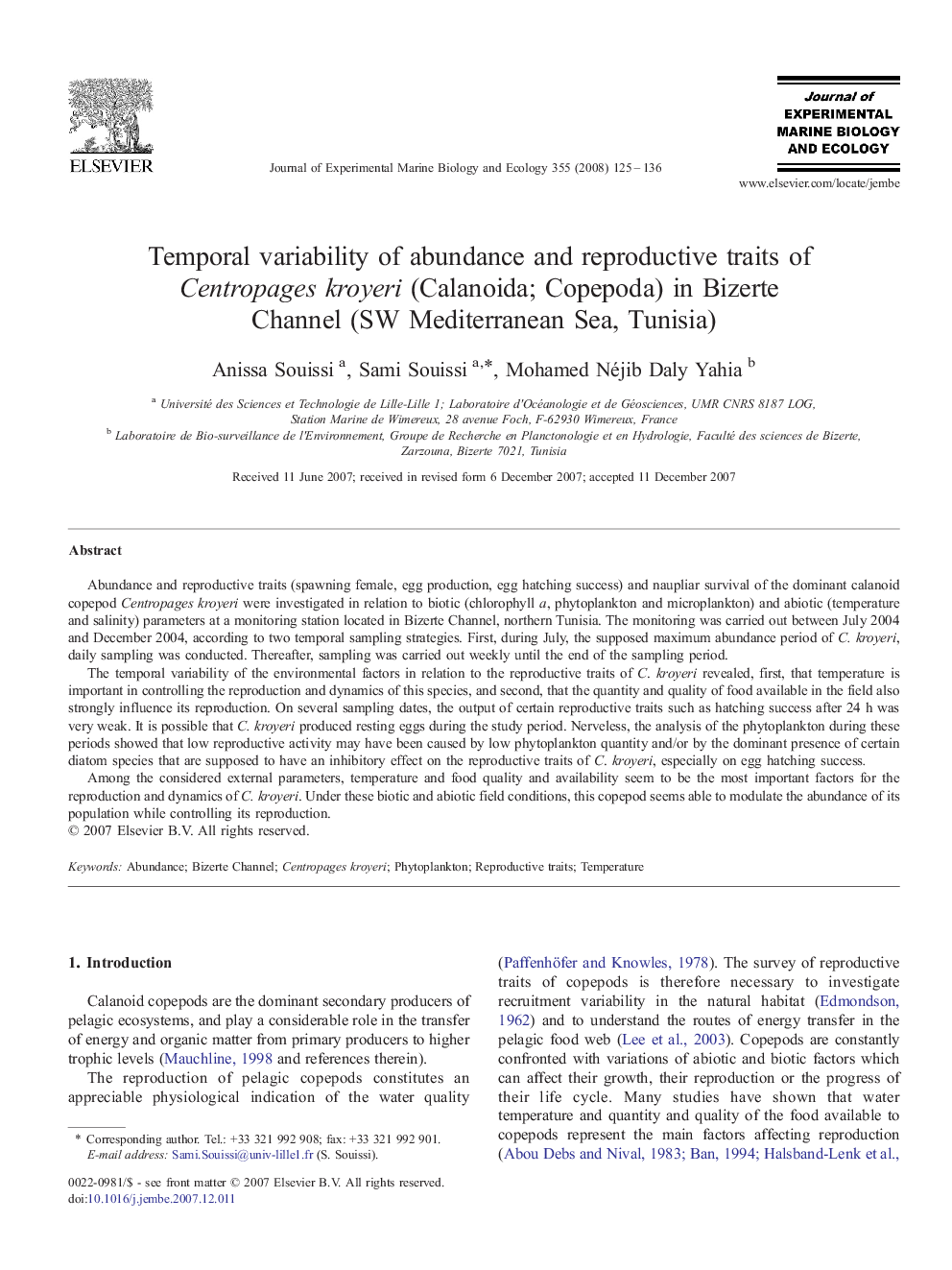| Article ID | Journal | Published Year | Pages | File Type |
|---|---|---|---|---|
| 4397406 | Journal of Experimental Marine Biology and Ecology | 2008 | 12 Pages |
Abundance and reproductive traits (spawning female, egg production, egg hatching success) and naupliar survival of the dominant calanoid copepod Centropages kroyeri were investigated in relation to biotic (chlorophyll a, phytoplankton and microplankton) and abiotic (temperature and salinity) parameters at a monitoring station located in Bizerte Channel, northern Tunisia. The monitoring was carried out between July 2004 and December 2004, according to two temporal sampling strategies. First, during July, the supposed maximum abundance period of C. kroyeri, daily sampling was conducted. Thereafter, sampling was carried out weekly until the end of the sampling period.The temporal variability of the environmental factors in relation to the reproductive traits of C. kroyeri revealed, first, that temperature is important in controlling the reproduction and dynamics of this species, and second, that the quantity and quality of food available in the field also strongly influence its reproduction. On several sampling dates, the output of certain reproductive traits such as hatching success after 24 h was very weak. It is possible that C. kroyeri produced resting eggs during the study period. Nerveless, the analysis of the phytoplankton during these periods showed that low reproductive activity may have been caused by low phytoplankton quantity and/or by the dominant presence of certain diatom species that are supposed to have an inhibitory effect on the reproductive traits of C. kroyeri, especially on egg hatching success.Among the considered external parameters, temperature and food quality and availability seem to be the most important factors for the reproduction and dynamics of C. kroyeri. Under these biotic and abiotic field conditions, this copepod seems able to modulate the abundance of its population while controlling its reproduction.
